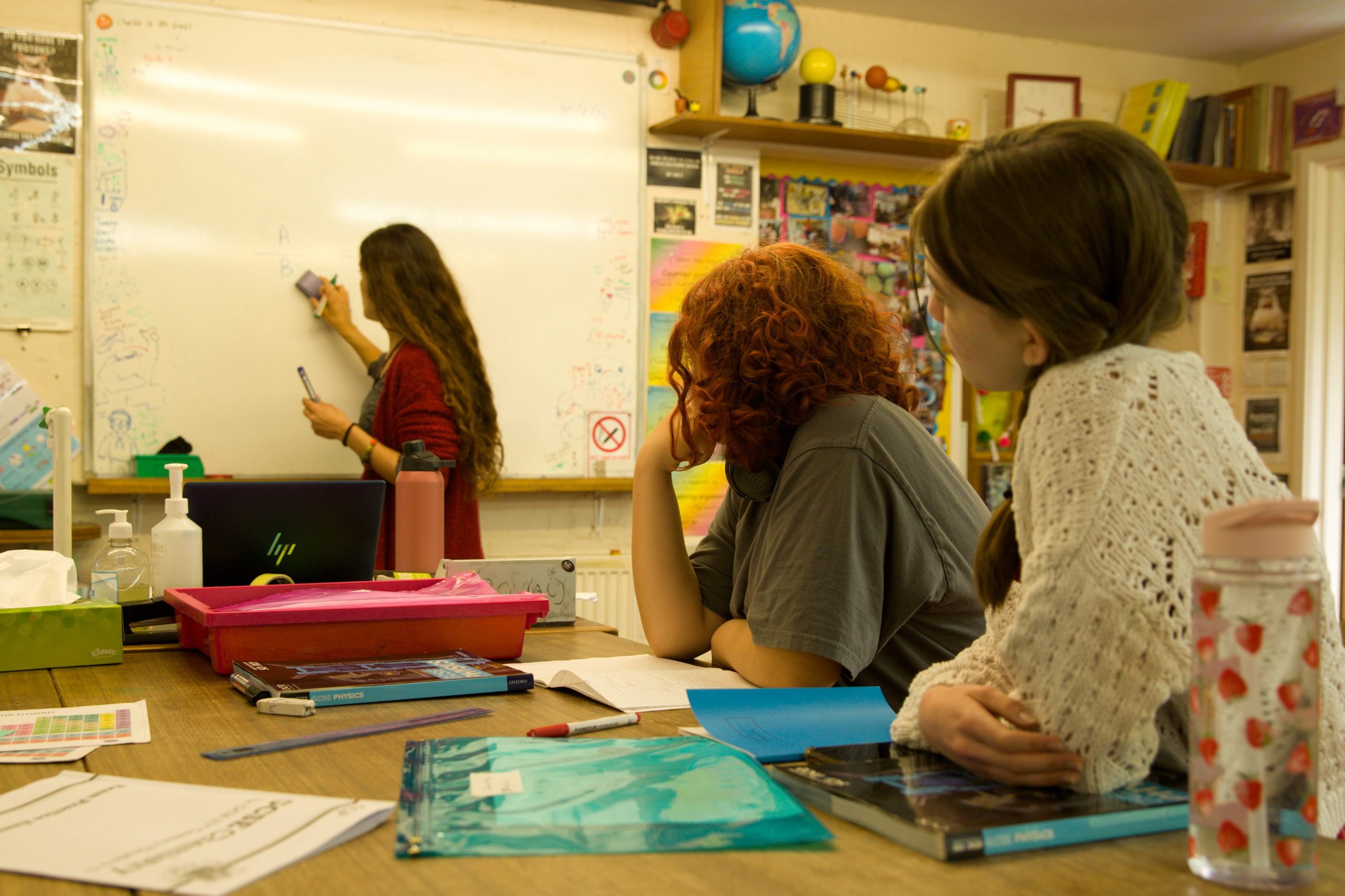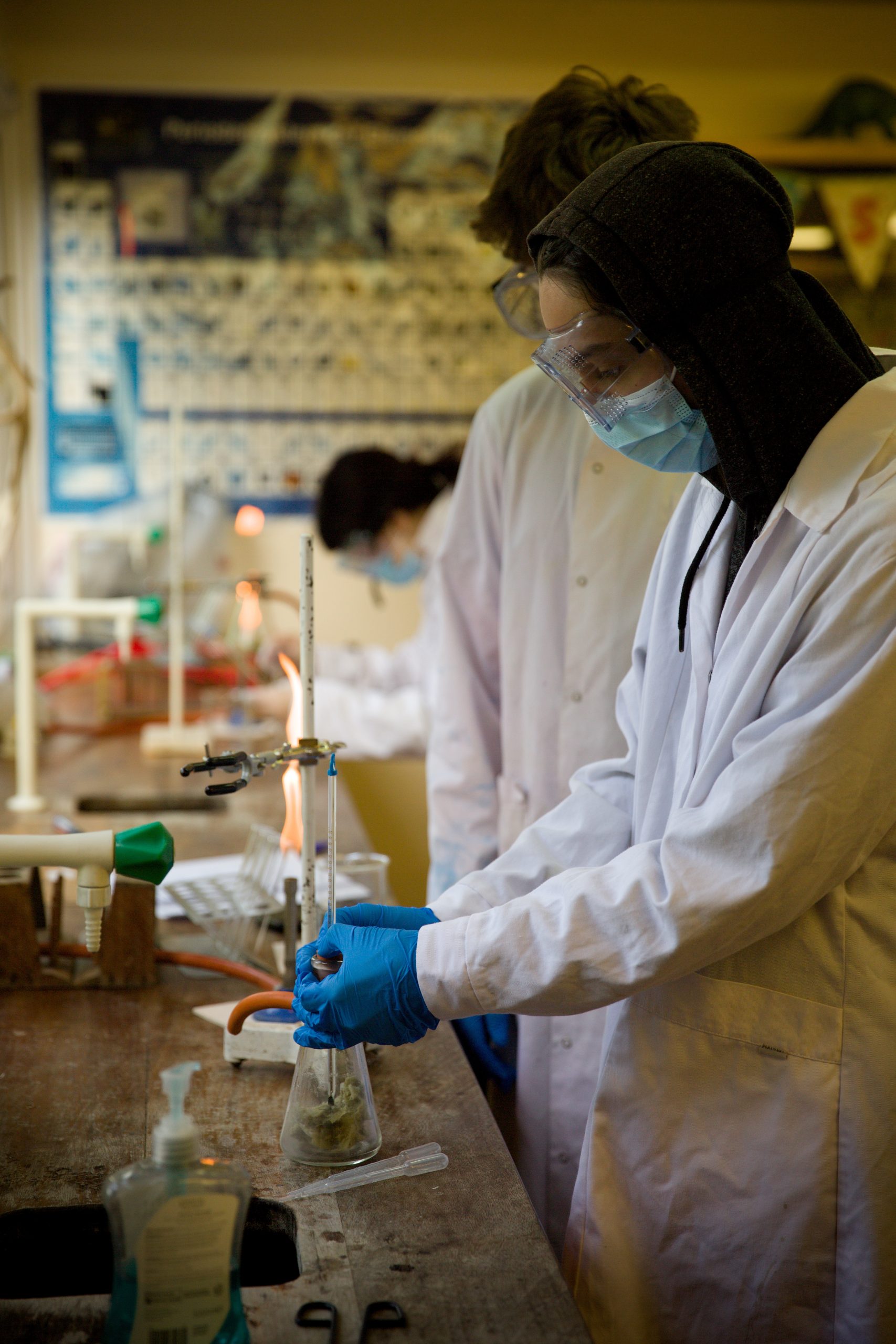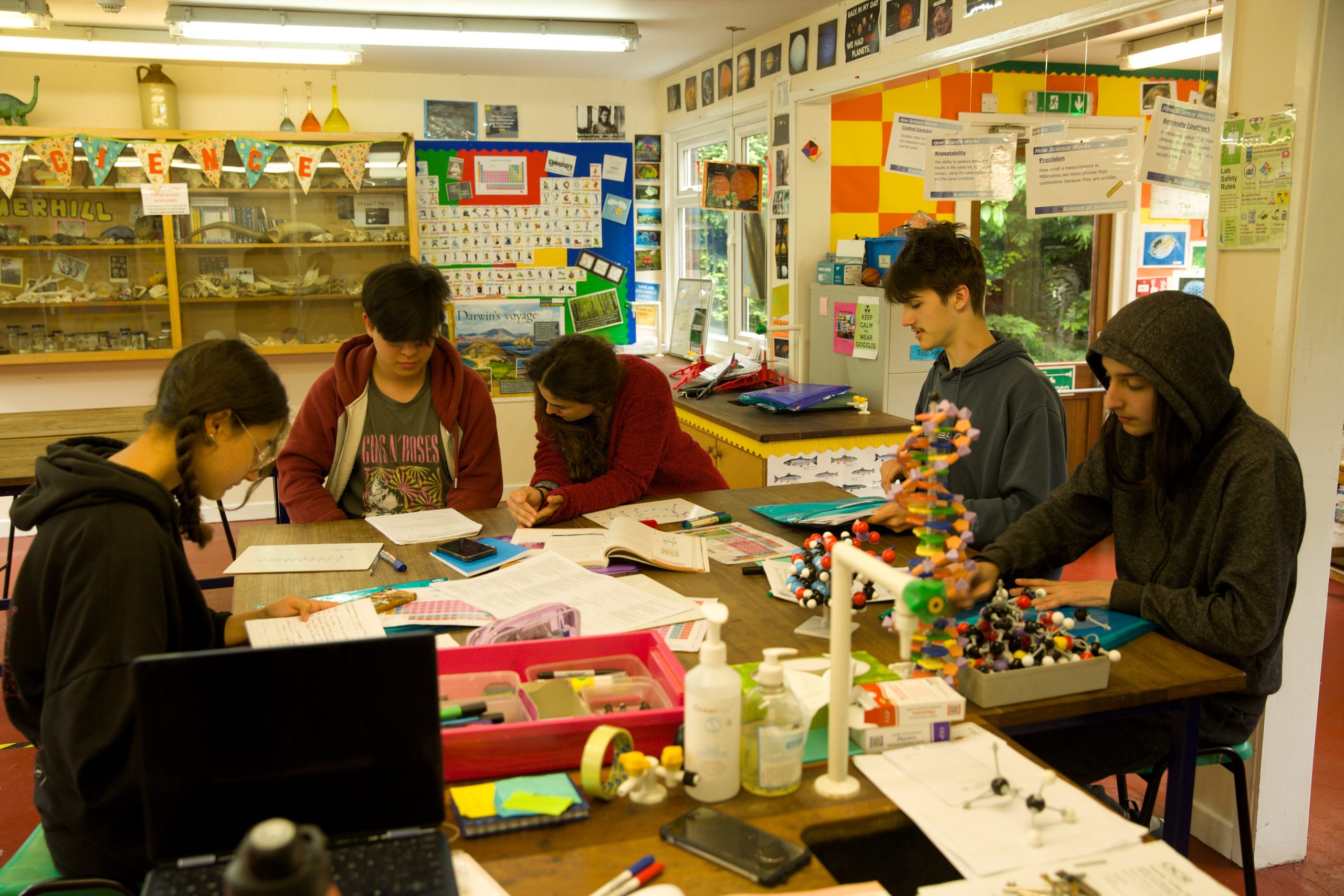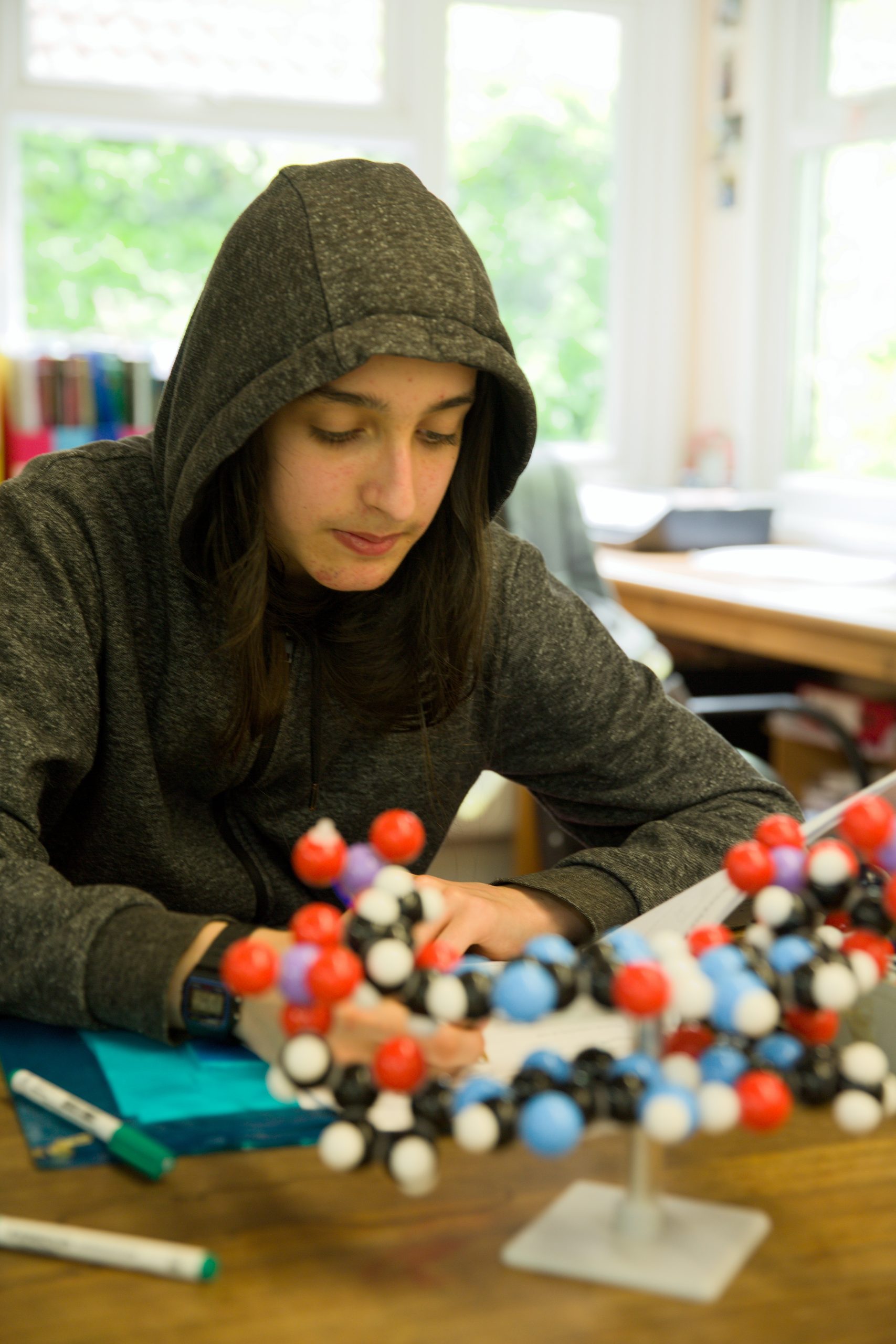The learning space
Our Science Lab is a very vibrant space, accessed regularly by Summerhill pupils of all ages, where through a wide range of different learning opportunities they engage, understand and are inspired by the scientific world and their interactions with it.
The lab itself provides a spacious classroom environment, with plenty of natural light, and lots of intriguing and humorous wall displays and displays of students’ work.
Due to the fact that it has been a most active space for over 100 years, it possesses a real wealth of scientific equipment and resources that encourage experimentation and creativity within all different science subjects. It also accommodates a unique collection of biological specimens, including several truly rare and ancient finds, as well as a beautiful mineralogy and petrology display.
Moreover, from time to time and depending on students’ interests and initiatives, the Science Lab also becomes home to different species of living friends such as pond plants and microorganisms, terrarium ecosystem life, pet animals etc.
Of course, the learning space for sciences at Summerhill often extends throughout the school grounds and even beyond in order to make the most out of the opportunities our natural environment is offering us and to expose our students to a diverse spectrum of field studies and activities.
Science lessons & general objectives
The science lessons at Summerhill are taught using as many different forms of activities as possible including scientific investigation, experimentation, discovery, modelling processes and presenting information in different formats.
Literacy and numeracy are built into the lessons and differentiated learning is used to assist pupils with all different levels of abilities, needs and backgrounds. As with all lessons at Summerhill, attendance is optional and the number of pupils in the class is kept quite small; it ranges from one-to-one sessions to small groups of 2 to 8 pupils. This enhances the intimacy within the learning relationships, ensures progression based on the individual’s pace and motivations and allows pupils to lead their own learning. Finally, several RSE topics are incorporated into a number of GCSE Biology and Chemistry lessons which work as complimentary additions to the school’s RSE Curriculum.
In general terms, the objectives of science lessons at Summerhill are:
- To support students in developing the skills and interest to explore science both formally and informally inside and outside the classroom.
- To support students in developing the necessary skills to allow them to understand and draw their own scientific conclusions from data and information given.
- To discover science through interaction and experimentation where possible, not necessarily through a GCSE syllabus
- To provide well-structured lessons, with understandable and attainable learning outcomes for all students.
- To increase literacy and numeracy during lessons.
- To encourage peer-to-peer learning, self-evaluation and strengthen students’ ability to research and self-study.
Current Science Curriculum
GCSE (age 14 – 17)
GCSE students can take two different routes to gain GCSEs in Science, either taking any of the pure subjects individually or taking the Combined Science GCSE. OCR New Specification B is taught for all routes, including all the mandatory practicals for each subject. Students can also study the work in all three science subjects or one or two subjects without taking an exam if they so choose.
Class 3 (age 13 – 14)
Class 3 covers a wide variety of science topics, and the aim of these sessions is to develop an interest and engagement with the scientific world and to build up from Class 2 with more advanced content. The curriculum is based on the current GCSE syllabus but delivered with significantly less focus on exams. Nonetheless, it is informative enough to allow students to gauge if they want to progress to a GCSE or not.
Crest Awards (age 13-17)
Crest Awards is a nationally recognised scheme of work based on hands-on and student-led projects in the STEM subjects. They are a valuable addition to pupils’ portfolio of skills and demonstrate a student’s interests and commitment to the subject, especially at Silver and Gold level where up to 130 hours of research plus a comprehensive report is needed to achieve the award.
Science Open Time – Individual projects (13-17)
Several Science Open Time slots are available to students from 13 to 17 years old and can have two distinct purposes. For students working towards their GCSE exams, they function as optional extra practice time. Pupils come at their own discretion, when they feel they need to, and work independently on different exam-based resources. At the same time, these open sessions are also accessed by students who have a specific interest at a given time and would like to work on their own individual projects, conduct pre-planned experiments or research a specific topic. In these cases, students are supported with their project planning, accessing of resources and risk assessing their activities but other than that they work independently.
Class 1 (age 5-9) and Class 2 (age 10-13)
The Science curriculum in Class 1 and Class 2 is mostly based on practical skills and aims to enhance children’s curiosity and understanding about the natural world. Both class syllabuses cover a breadth of topics such as properties and uses of substances, biodiversity, processes of the planet, forces, body systems and much more. Depending on interest, Crest Awards at Star and Superstar level are also integrated into Class 1 and Class 2 Science.





